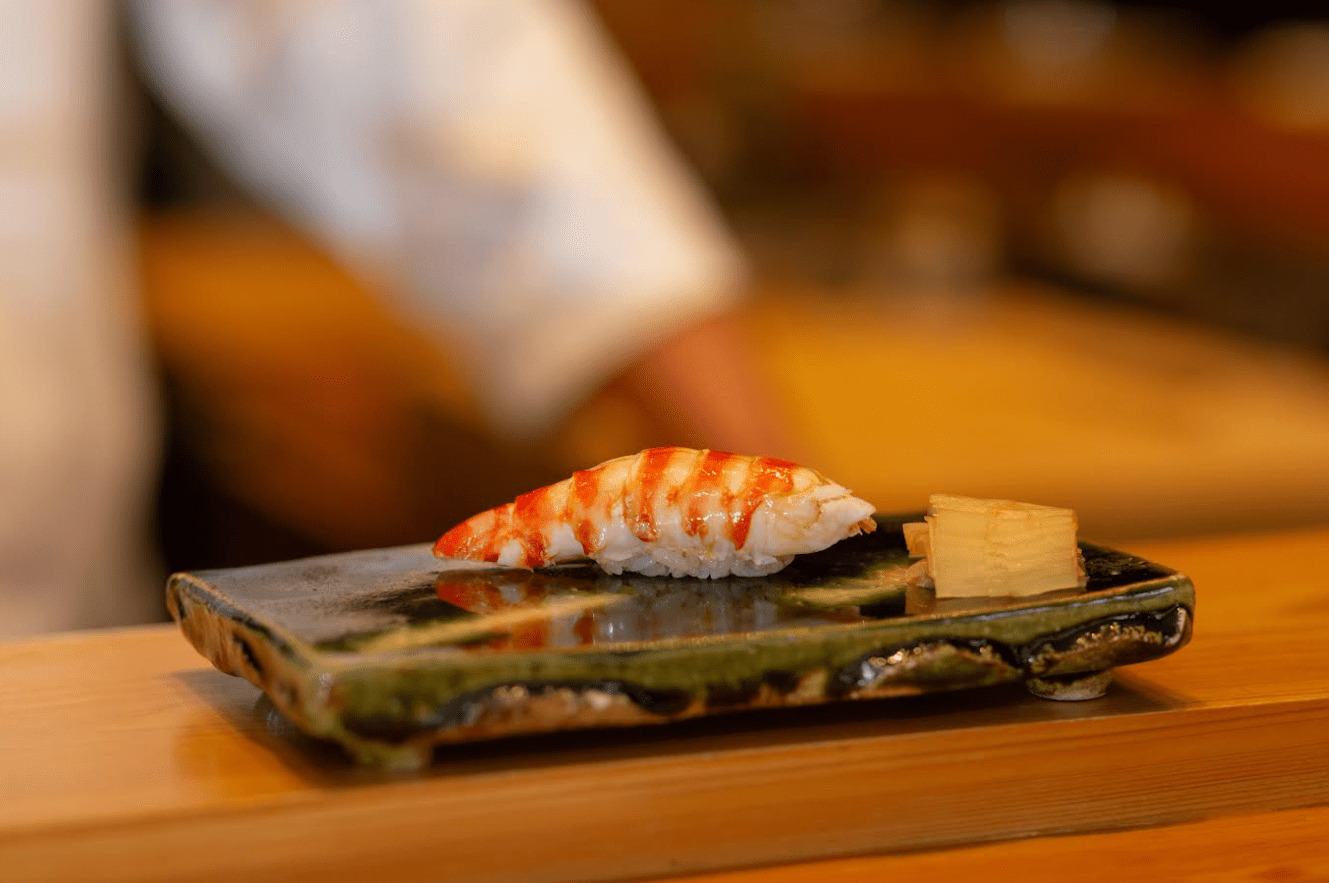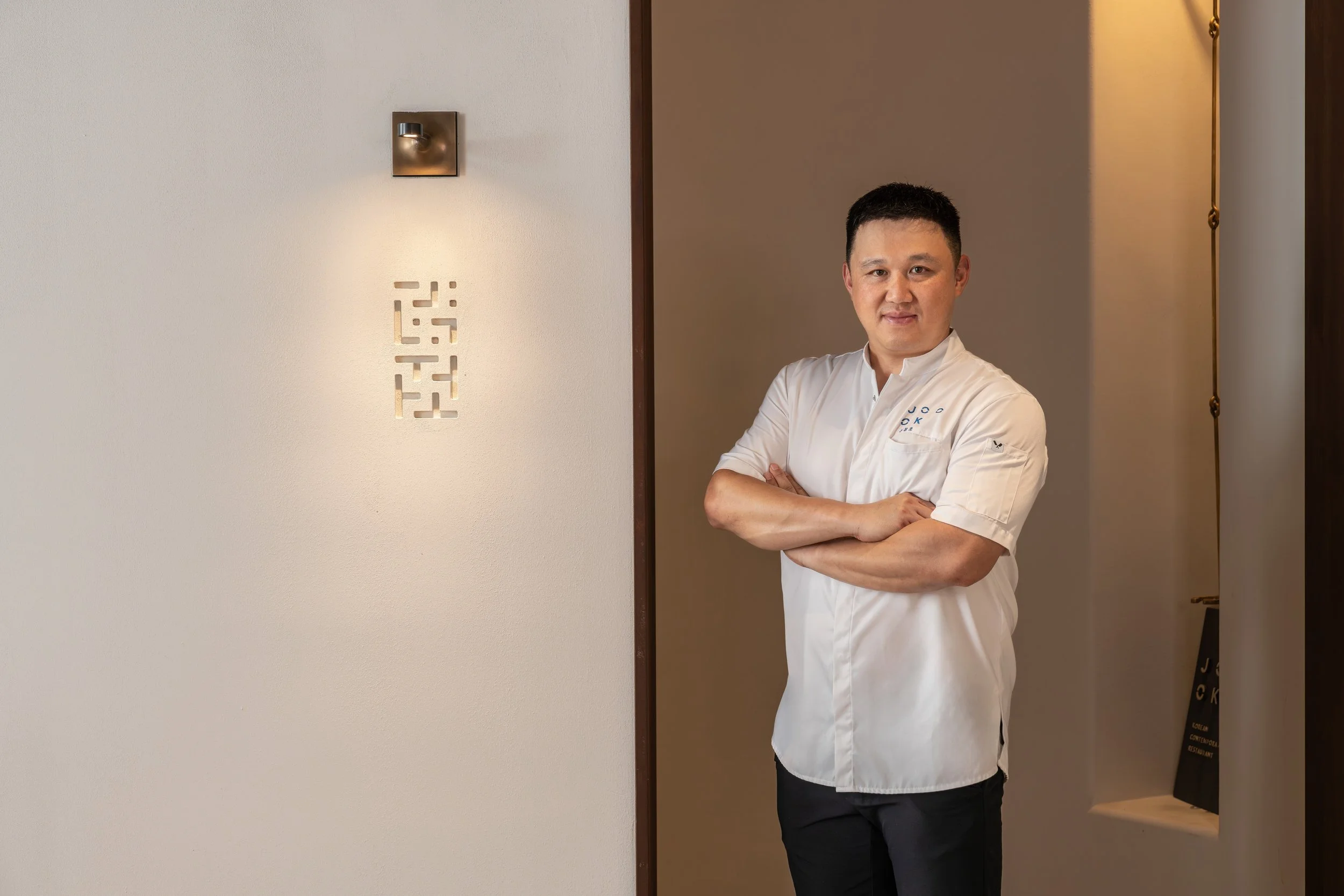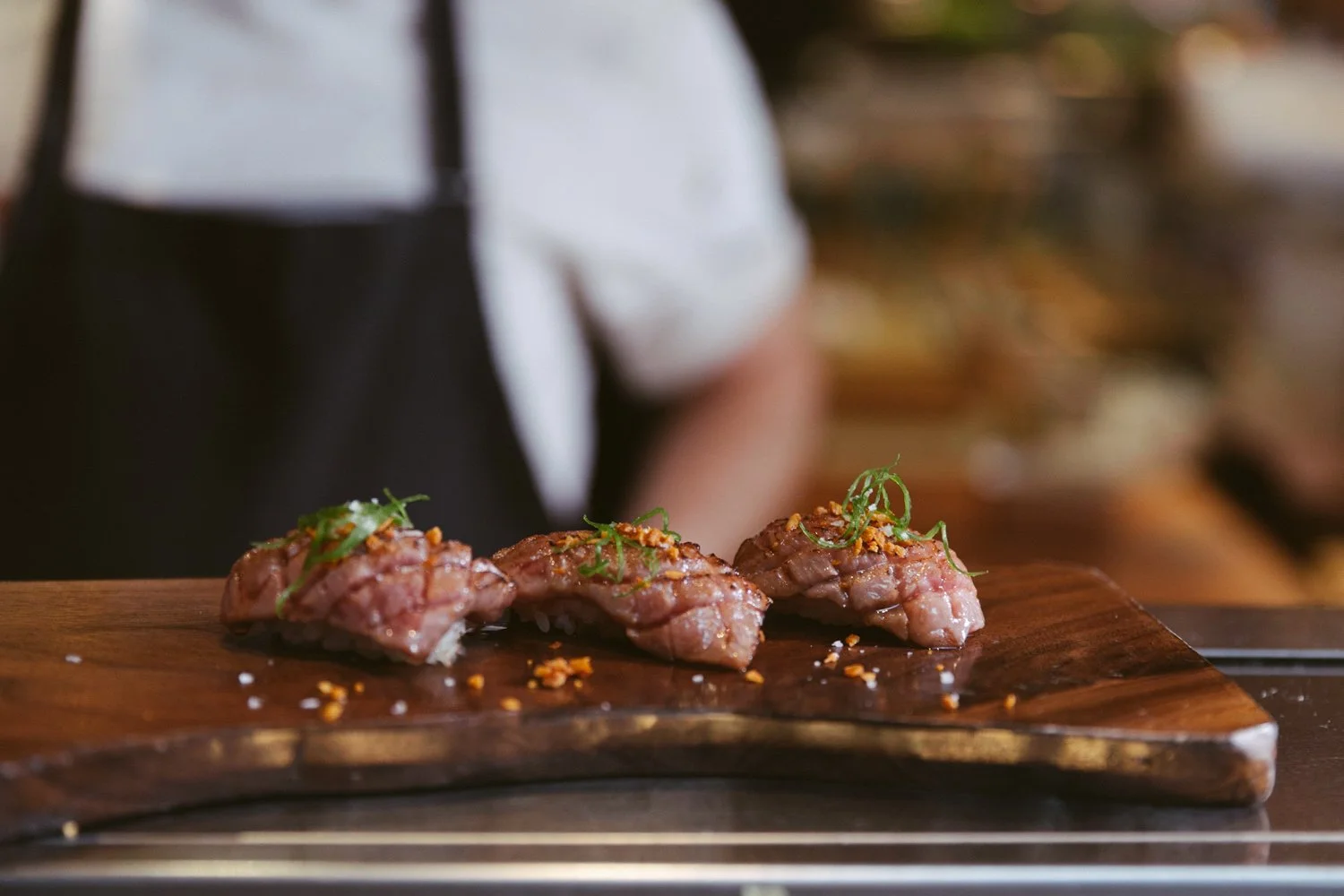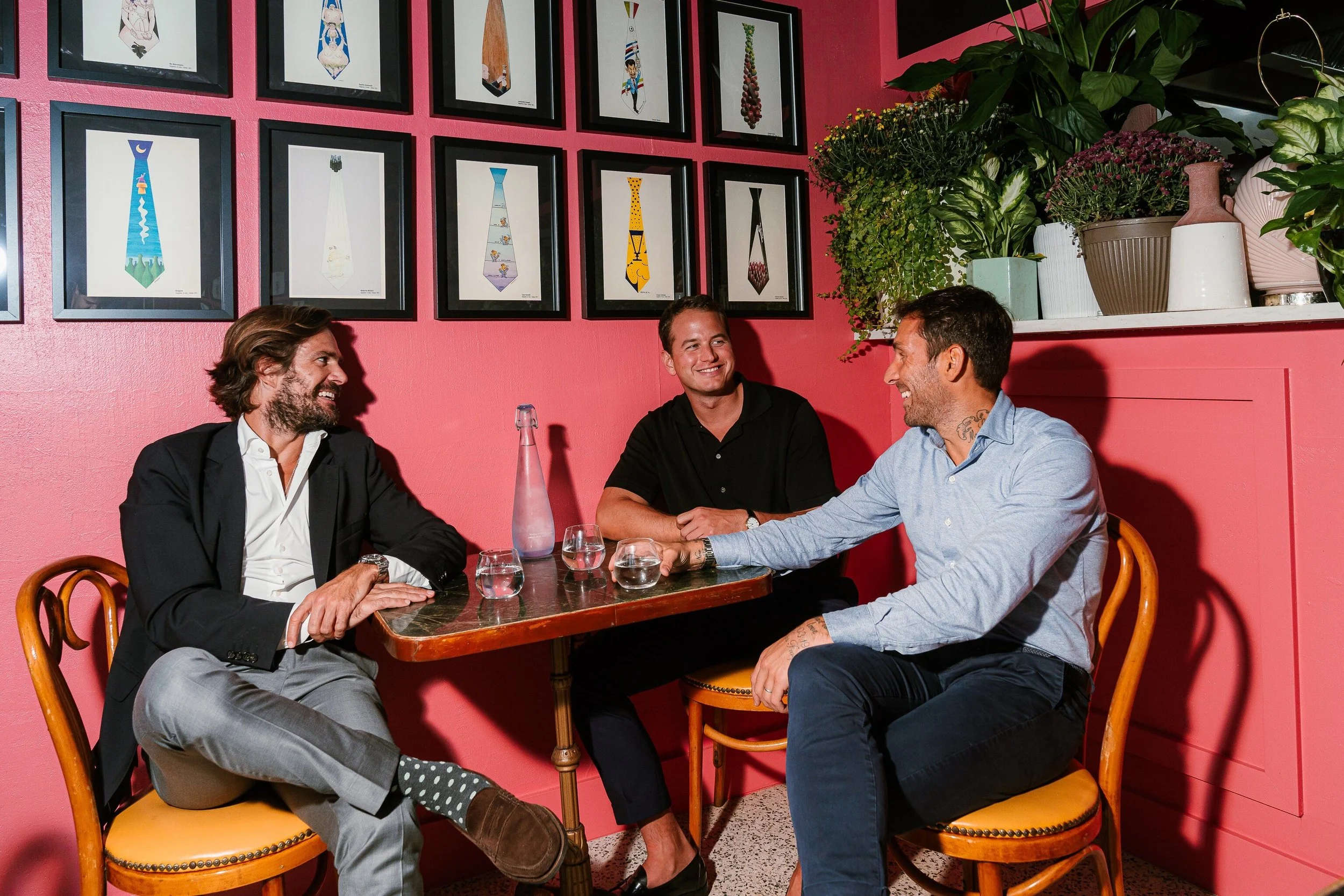
AUTHOR BIO: Eric Barton is editor of The Adventurist and a freelance journalist who has reviewed restaurants for more than two decades. Email him here.
The first thing you notice at Namo isn’t the sushi—it’s the quiet. The small restaurant has none of the theatrics of a Japanese restaurant in Dallas back in the day, which trended toward teppanyaki or steakhouse. Instead, there’s chef Kazuhito “Kaz” Mabuchi at the counter, speaking in near whispers as he sets down a slice of buri, its fattiness warming against rice that’s been tuned precisely to its texture. Watch him for an hour, and you begin to understand why regulars call him a sushi whisperer.
That’s the thing about Mabuchi: he has turned Namo into one of the most talked-about restaurants in Dallas, a place where the sushi is quietly spectacular. He sources his fish directly from Japan, a more exacting practice than ordering through an importer.
His omakase menus shift with Japan’s micro-seasons, which change every two weeks, and he treats each fish individually—as if it arrived with its own set of instructions. “Even if you get the most amazing quality fish directly from Japan, it won’t be good if you don’t treat it right,” he told me. “Every fish is different. We don’t do the same thing over and over again.”
Mabuchi
Mabuchi grew up in Kawaminami, a small seaside town in Japan’s Miyazaki prefecture, where the local specialties were beef, mango, and chicken—not sushi. His parents owned a bar, and he still recalls karaage, or Japanese fried chicken, as the dish that defined his childhood, along with tofu steak cooked on a cast-iron pan.
“My hometown is very small, where everyone knows each other,” he said. “There’s lots of nature—the ocean, pine trees, rivers, and farms.” Food was a connection to the place, a way for his family to keep tied to their town and traditions.
When he moved to the U.S. in his 20s, cooking wasn’t immediately the plan. He started on the hot line at Maneki in Seattle, the city’s oldest Japanese restaurant, and then fell into a long run at a Benihana franchise. For nearly 13 years, he performed the hibachi routine with clanging spatulas and onion volcanoes, loving the camaraderie but eventually feeling it wasn’t enough. “I almost felt like I didn’t have a backbone for my career,” he said. “Making teppanyaki is fun, but I didn’t really feel like I was a chef. I was a teppan cook, but not a chef.”
That’s when he set his sights higher. To him, true chefs mastered either French cuisine or sushi—skills that could travel anywhere. The opportunity came at Sushi Ginza Onodera in Los Angeles, a restaurant that boasted global acclaim and a standard of precision that changed him forever. “I learned how to treat the fish properly, and the seasonality of each kind of seafood,” he said. More importantly, he learned that even the same species could vary. “Sometimes the meat is fragile. If the belly’s too soft, you need to adjust how you cut the fish, how you do the knife work. I talk to the fish.”
By the time he arrived at Namo in 2022, Mabuchi had built a philosophy that combined exacting technique with a kind of empathy for his ingredients. He began shipping fish directly from Tokyo on pallets arranged just for the restaurant. He adjusted his menus to reflect Japan’s shifting micro-seasons, a concept largely foreign to Texas diners. That meant serving monkfish liver in winter, baby squid in spring, vinegar-marinated fish when they were at their best.
“It’s kind of tough when you spend two hours preparing the baby gizzard shad and the guest’s reaction is, ‘It’s not my thing,’” he said. But those same guests, when coaxed through an omakase, often discover something new they love.
Even the rice isn’t left to chance. At Namo, the temperature of each batch is matched to the fattiness of the fish the rice supports. Cooler for scallops, shrimp, and sea urchin. Warmer for toro, salmon, and yellowtail. “What makes better sushi is how much effort you’re putting into those small details,” Mabuchi said. “It’s not amazing background or Michelin-level skills. It’s how much you wash the rice, how long you soak the rice in the water, how you slice the fish.”
The details, in the end, are what define Mabuchi. His chawanmushi, or steamed egg custard, is delicate and precise, his daikon salad scattered with shirasu almost weightless, his ankimo, or monkfish, set on brioche toast like foie gras.
Mabuchi is building trust in Dallas one slice of fish at a time, not with spectacle, but with a quiet insistence on precision. And when the day ends, he returns to the simple life that still grounds him: walking his dogs, strumming his ukulele, eating grilled chicken with rice and miso soup. The sushi whisperer of Dallas doesn’t need to say much. His work speaks on its own.
The Trio That Made Single-Item Restaurants a Thing—And Sent the Idea Nationwide
Three restaurateurs walk into Miami and decide one dish is enough. Now everyone’s copying them.















